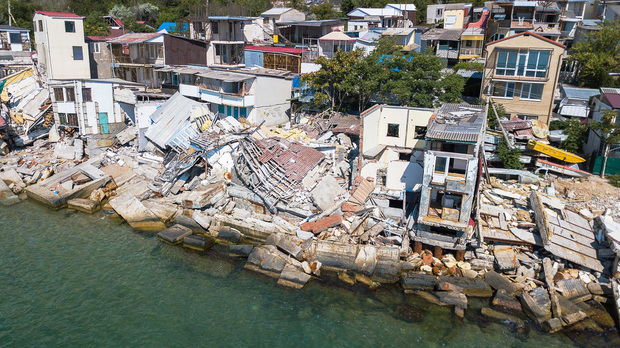Too many important variables remain unknown to be able to come up with a reliable estimate of insured losses from Superstorm Sandy, says catastrophe modeler Risk Management Solutions (RMS).
“Issues continue to tickle the meter in terms of insured losses; this is an ongoing event,” Michael Kistler, director of Model Solutions at RMS, tells PC360. “Our goal is to produce a stable, usable number for the industry to use.”
RMS' Hoboken, N.J. office is experiencing firsthand effects of Sandy. Most of the small city across the Hudson River from New York City remains without power and some residents are still stranded. Train service from Hoboken to New York—counted on by thousands—remains out of service. Flood waters are just beginning to recede. Businesses remain closed.
It's just one example, Kistler says, of the continued effects of Sandy that make it difficult to release an insured-loss estimate because with every minute of power loss and flooding, insured losses increase. Multiply these effects in various areas, such as New York City and Southern New Jersey, that have been hit hard by the storm and continue to deal with the ripples left behind. Millions were without power right after the storm and many remain in the dark. Thousands haven't been able to return home or to their businesses.
In fact, Sandy caused the most power outages of any hurricane in history—effecting 15 states at the peak, RMS reports.
“Power reconnection rates have been shown during previous hurricanes to be an important driver of losses,” says Claire Souch, vice president for Model Solutions at RMS. “For example, after Hurricane Ike in 2008, more than two million residents were left without power in Texas, with power outages lasting more than 10 days along the coast and in the Houston suburbs, with reconnection times rivaling that of Katrina and significantly longer than all other hurricanes in the past decade. Infrastructure damage over a wide geographical area can take time to repair, depending on how quickly and how many repair teams can be mobilized.”
The speed at which power is restored and the pumping of floodwaters from basements and subways, for example, “remain major unknowns,” Souch says. Extensive standing water has been shown in previous events to lead to a phenomenon known as “vulnerability deterioration,” as the water seeps further into building's structures, she says.
These factors have not stopped rival catastrophe modelers Eqecat and AIR Worldwide from releasing insured loss estimates from Sandy.
Eqecat says insured losses will total $10 billion to $20 billion, which could make Sandy the third-costliest U.S. storm ever for insurers—behind only 2005's Katrina ($46.6 billion) and 1992's Andrew ($22.9 billion). AIR Worldwide says Sandy will cause between $7 billion and $15 billion in insured losses.
See related story: Disruption from Sandy Doubles Eqecat Insured-Loss Estimate to Up to $20B
Want to continue reading?
Become a Free PropertyCasualty360 Digital Reader
Your access to unlimited PropertyCasualty360 content isn’t changing.
Once you are an ALM digital member, you’ll receive:
- Breaking insurance news and analysis, on-site and via our newsletters and custom alerts
- Weekly Insurance Speak podcast featuring exclusive interviews with industry leaders
- Educational webcasts, white papers, and ebooks from industry thought leaders
- Critical converage of the employee benefits and financial advisory markets on our other ALM sites, BenefitsPRO and ThinkAdvisor
Already have an account? Sign In Now
© 2024 ALM Global, LLC, All Rights Reserved. Request academic re-use from www.copyright.com. All other uses, submit a request to [email protected]. For more information visit Asset & Logo Licensing.








